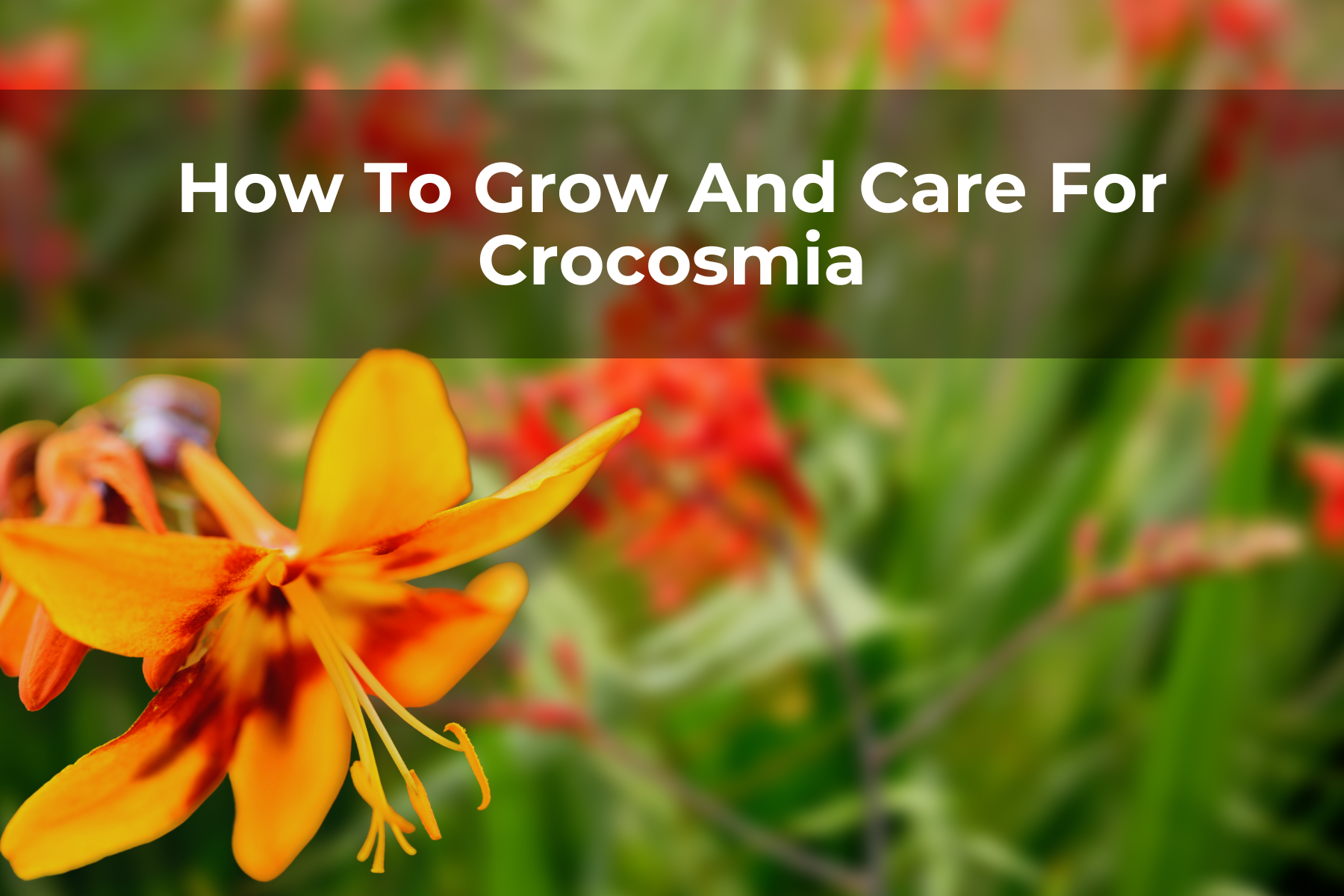Last Updated on October 8, 2022 by Real Men Sow
Crocosmia produces beautiful, bold flowers in strong colours. They are considered herbaceous, therefore, it will die back to the earth over winter and regrow each spring. It produces clumps of attractive, sword-shaped flowers and leaves that last a long time.
Crocosmia can be easy to grow. However, some varieties can become invasive. The corm (root) of the plant is close to the surface so you can check its growth. Once the Crocosmia plant is established for a while, you may need to dig around it every year to keep it from taking over. They are also great for cutting flowers. The clumps produce so many blooms that there are plenty to fill the vase and garden.
Planting Crocosmia
Crocosmia can tolerate many conditions, but they prefer a spot that isn’t too dry and gets plenty of sunlight. The site should not be too dry. This will reduce the possibility of flowering. It can be grown from corms rather than from plants. They will grow reliably from both corms as well as flowers.
Crocosmia corms look similar to bulbs. The best time to plant them is in the early spring. They hydrate well in rainy spring or late winter. They can be hydrated once they are hydrated and will start growing as soon as the soil is warmed up in spring. The corms should be planted 8-10cm (3-4cm) below the soil surface. Plant them in groups to make a clump. It is a pest-free plant that adds great color to borders. Crocosmia was once known as Montbretia, and it may still be called that way occasionally.
Staking Crocosmia
Crocosmia can flip over and lie over nearby plants if you don’t control them. They are a bad neighbor and staking is a must to help it stay upright and keep them from spreading. To make a loop, use cornus stems that were cut in the winter. String and stakes are also options. For taller plants, you will need to use longer stakes and at most two rows of string.
Crocosmia Care Guide
Crocosmia corms don’t need much attention after you plant them. Plant them when the weather is warm in spring and there is no danger of frost.
To help your plants survive winter, make sure they are at least 3 inches deep and 6-8 inches apart. This will help you keep them upright and help with their growth. You can reduce the tendency for long leaves and stalks to fall by placing grow-through supports.
Light
Crocosmia flowers best when they are in full sunlight. Although they will flower in partial sunlight, they won’t grow as well as when in full sun. Some afternoon shade is fine in hot climates. You can move partial shade Crocosmia plants to a sunny spot by removing the corms from the leaves.
Soil
Good drainage is essential for crocosmia. To create a loose, well-drained soil, amend your soil with peat moss and sand if it is made of clay. You may also grow these plants in raised beds and containers.
Water
Crocosmia plants require regular watering but should not be overwatered. When the soil is dry to the touch, water.
Temperature and Humidity
Crocosmia can withstand high heat and humidity but it thrives in dry climates with milder temperatures. Gardeners in the Pacific Northwest, where plants tend to dominate the flowerbed, believe that too much is not a good thing.
Fertilizer
Crocosmia can grow well in both rocky and lean soils. It doesn’t require supplemental fertilizer. Overgrowth can result in a decrease in the number of blooms.


